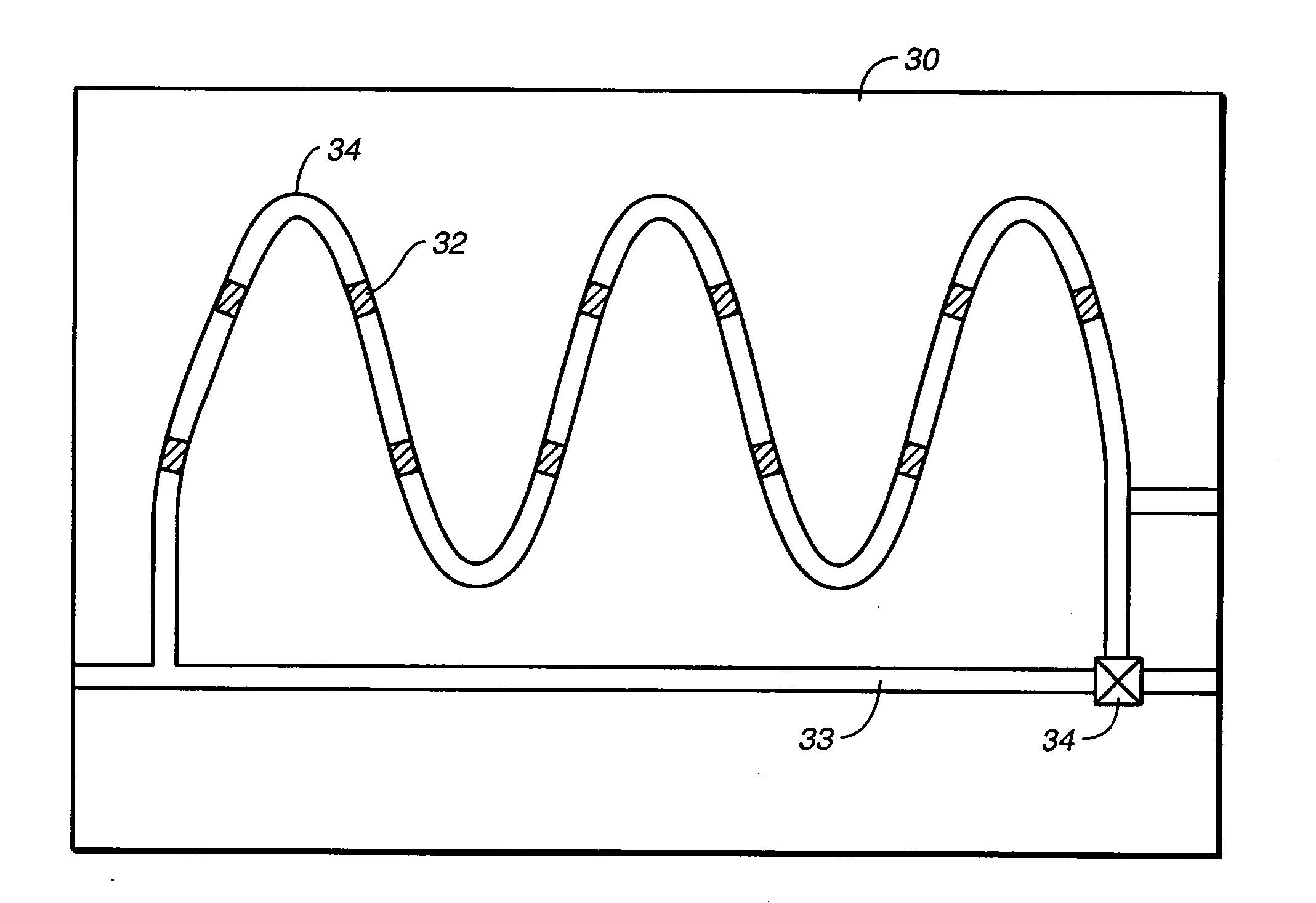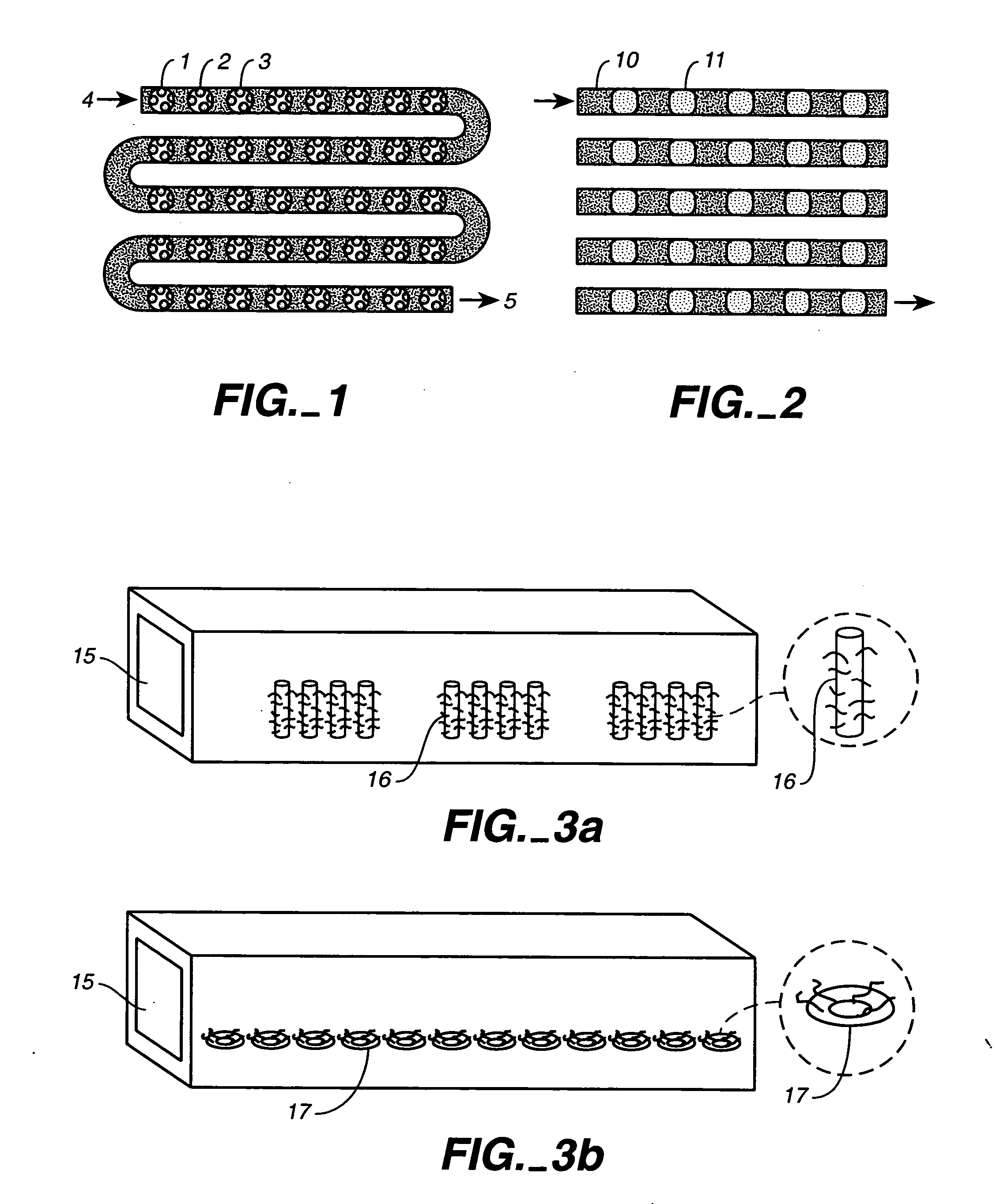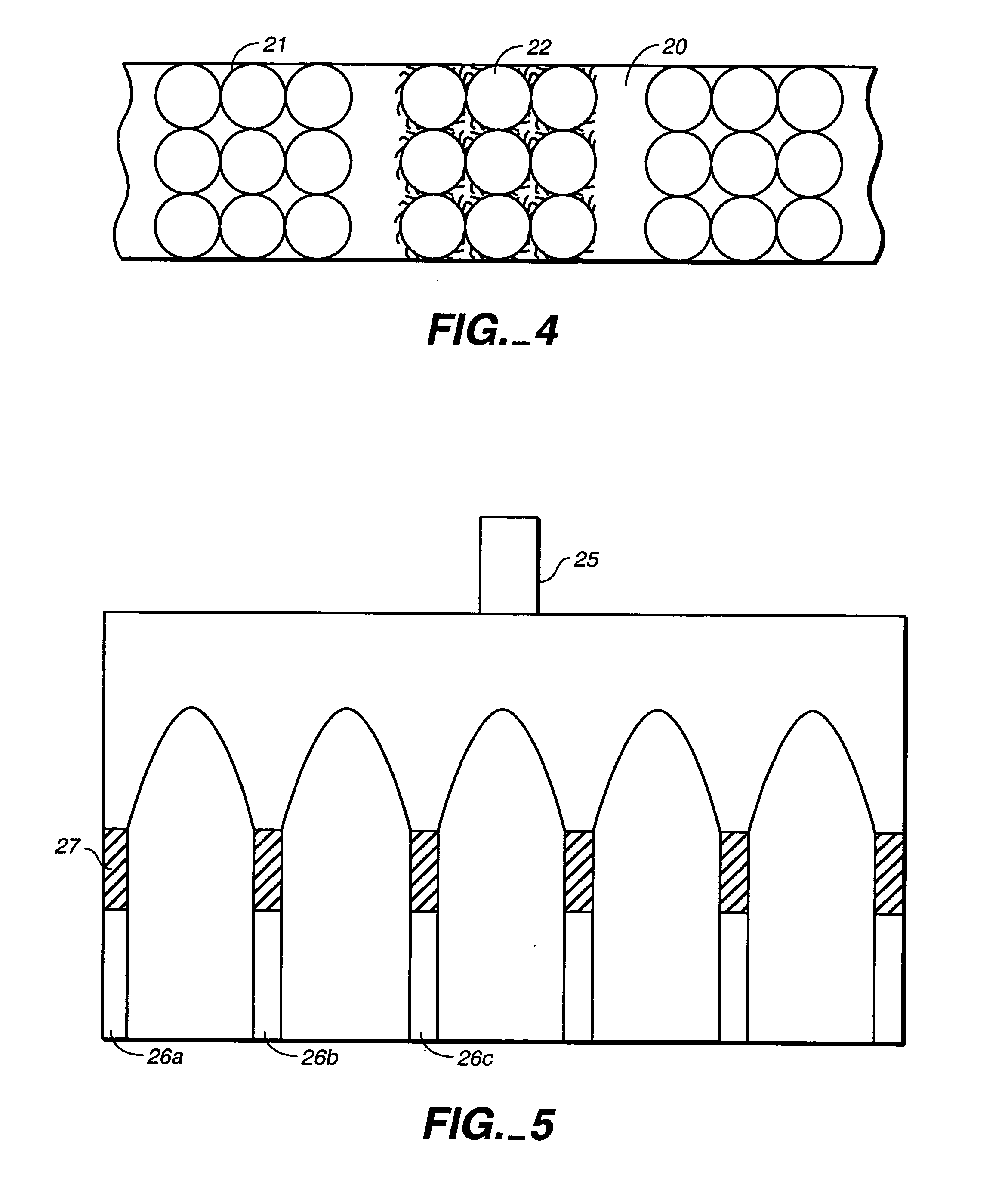Microfluidic devices comprising biochannels
a microfluidic device and biochannel technology, applied in fluid controllers, laboratory glassware, instruments, etc., can solve the problems of high cost, high labor intensity, and high cost of optimization process, and achieve the effect of reducing labor intensity, cost and time-consuming
- Summary
- Abstract
- Description
- Claims
- Application Information
AI Technical Summary
Problems solved by technology
Method used
Image
Examples
example 1
Thermal Cycling Capability of Ceramic Microchip Device
[0452] The thermal cycling capability of the microchip device of the invention was examined as follows. A ceramic microchip device was constructed as described herein. The temperature of the device was regulated using a controller and computer as described below or by clamping the device onto a commercially available thermal cycler (MJ Research, Inc., Waltham, Mass.). The temperature of the device was monitored using a resistive temperature device paste (RTD; DuPont part number 5092D) having a coefficient of 3000±200 ppm / C. The microchip device was fabricated by printing the RTD paste onto the device twice in order to achieve a lower resistance value. The typical resistance of the printed RTD element on the microchip device was 300 ohm.
[0453] A multi-loop controller (MOD30ML) from Asea Brown Boveri Ltd. (ABB; Norwalk, Conn.; http: / / www.abb.com / global / usabb / usabb045. nsf?OpenDatabase&db= / Global / USABB / u) was used to perform the t...
example 2
Polymerase Chain Reaction Amplification of bla on Ceramic Microchip Device
[0458] The application of the microchip device of the invention as a device for performing the polymerase chain reaction was examined as follows. A ceramic microchip device was constructed as described herein, and thermal cycling was controlled as described in Example 1.
[0459] A two-step PCR protocol was performed to amplify a 627 bp fragment of the plasmid marker β-lactamase (bla) encoding the gene responsible for ampicillin resistance (AmpR) carried by the E. coli K12 strain, DH5α on plasmid pBluescript KS+ using a kit obtained from Perkin Elmer (Norwalk, Conn.). PCR was performed for a total of twenty-five cycles, where each cycle consisted of a “denaturation” step of 45 sec. at 94° C. and an “annealing” step of 60 sec. at 72° C. (wherein primer annealing and extension were performed at the same temperature). A 50 μL PCR reaction mixture containing bla-specific primers (BLA-f1+BLA-r1, contained in the Per...
example 3
PREPARATION, ASSEMBLY AND LOADING OF A MICROFLUIDIC REACTION CHAMBER
[0461] Six retaining pins of 300 series stainless steel were press-fitted into apertures on a grade 2 commercially pure titanium base plate containing four well structures. A layer of Xylan 8840 black primer (Whitford Worldwide) was applied to the base plate, followed by a layer of Dupont 856-200 Teflon-FEP clear. The base plate and O-rings were soaked in a 1% Alconox Solution for at least 30 minutes, then thoroughly rinsed in distilled, de-ionized water, and dried with compressed nitrogen or air to ensure proper cleaning.
[0462] A clean O-ring (Parker Seal Group, O-Ring Division, Part No. 2-015) was pressed completely down into each O-ring groove on the base plate. A soda glass microscope slide containing four 27×27 microarrays of polyacrylamide gel pads was then inserted into the base plate cavity such that the microarrays faced the base plate.
[0463] A low-compression silicone sponge rubber compliance layer (McM...
PUM
 Login to View More
Login to View More Abstract
Description
Claims
Application Information
 Login to View More
Login to View More - R&D
- Intellectual Property
- Life Sciences
- Materials
- Tech Scout
- Unparalleled Data Quality
- Higher Quality Content
- 60% Fewer Hallucinations
Browse by: Latest US Patents, China's latest patents, Technical Efficacy Thesaurus, Application Domain, Technology Topic, Popular Technical Reports.
© 2025 PatSnap. All rights reserved.Legal|Privacy policy|Modern Slavery Act Transparency Statement|Sitemap|About US| Contact US: help@patsnap.com



